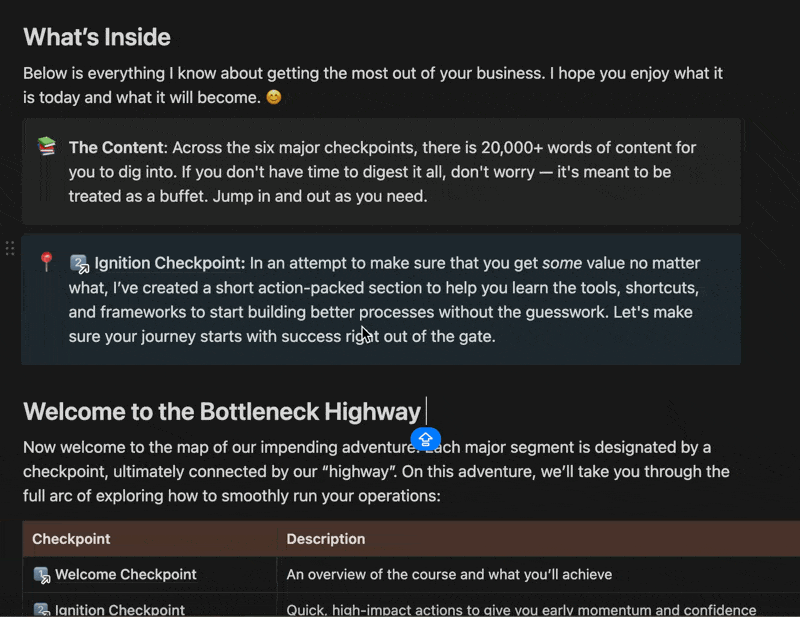Not subscribed? Sign up to get it in your inbox every week.


PRESENTED BY HUBSPOT
🧠 Cut your workload with 1000+ prompts…for free
This free guide has 1001+ AI prompts, checklists, and templates to save you time on what really matters.
PRESENTED BY THE BOTTLENECK
Ready to leap from “reliable doer” to the ops leader everyone counts on?
Bottleneck Breakers gives you the exact 40+ playbooks and 12 templates that trimmed 20 hours of grunt work from my week and put a COO title on my résumé before I turned 30.
It’s the structured shortcut for managers who can’t wait years for a shot.
Take Maya, a customer-success lead at a 60-person SaaS startup. She plugged the “Run-Rate Rescue” and “One-Hour Ops Review” into her weekly rhythm; three months later her CEO stamped “Director” on her business card.
Inside, you’ll diagnose bottlenecks in minutes, fix them once, and free up the strategic headspace execs notice when promotion season hits.
No videos. No fluff. Just copy-and-deploy SOPs that work today.
Thanks to our sponsors who keep this email free. Interested in sponsoring these emails? See our partnership options here

The Innovation Budget That Saved Our Startup
Insight from HBR
I had $200K left in our product budget and two ideas that would each cost exactly that much to build.
Our CEO wanted registered agent services.
Our biggest customers kept asking for mailboxes.
Both sounded logical—but they lived in completely different worlds.Both would drain our remaining runway if we got it wrong.
That's when I stumbled across a framework that completely changed how we think about innovation spending (and probably saved the company).
Most startups either blow everything on moonshots or play it so safe they never innovate.
We were about to make the first mistake until I discovered how the smartest companies actually allocate innovation dollars.
The framework is deceptively simple—split every innovation dollar into three buckets:
Core (70%): Keep your lights on. Improve what's already working. For us, this meant cutting incorporation time from 3 weeks to 5 days and fixing the checkout flow.
Adjacent (20%): This is where the magic happens. Use your existing strengths to solve related problems. We knew incorporation—what other legal headaches did our customers have?
Transformational (10%): The crazy ideas that'll either change everything or fail spectacularly. Wild experiments that keep you honest about the future.
I'll be honest—spending only 10% on moonshots felt wrong. Every startup story I'd heard involved betting everything on one big idea. But here's what the data actually shows: breakthrough innovations need that small, protected budget.
Without the constraint, they consume everything. With it, they stay focused.
The Two Rules That Make This Work
Rule 1: Protect the budget like your life depends on it. We literally created separate budget lines that required leadership approval to touch. This might seem extreme, but there's a reason: when your core business is on fire, it screams for attention and resources. Innovation opportunities, on the other hand, arrive quietly and can easily get pushed aside. Without formal budget protections, the urgent always crowds out the important.
Rule 2: Track it monthly, not quarterly. Miss three months of innovation spending and you've lost a quarter of experimentation time. We reviewed allocation every 30 days because it's shockingly easy to drift when you're obsessing over monthly targets.
The Bottom Line
This framework saved us from startup suicide: betting everything on unproven ideas when cash was tight, or playing it so safe we stagnated when we had runway.
Most companies swing between these extremes. The 70-20-10 split forces balance. It's not sexy. It won't make TechCrunch. But it keeps you building toward tomorrow while staying alive today.
Your biggest challenge won't be learning this framework. It'll be having the discipline to tell your CEO no when their pet project doesn't fit the budget.

What you think of today's newsletter?





